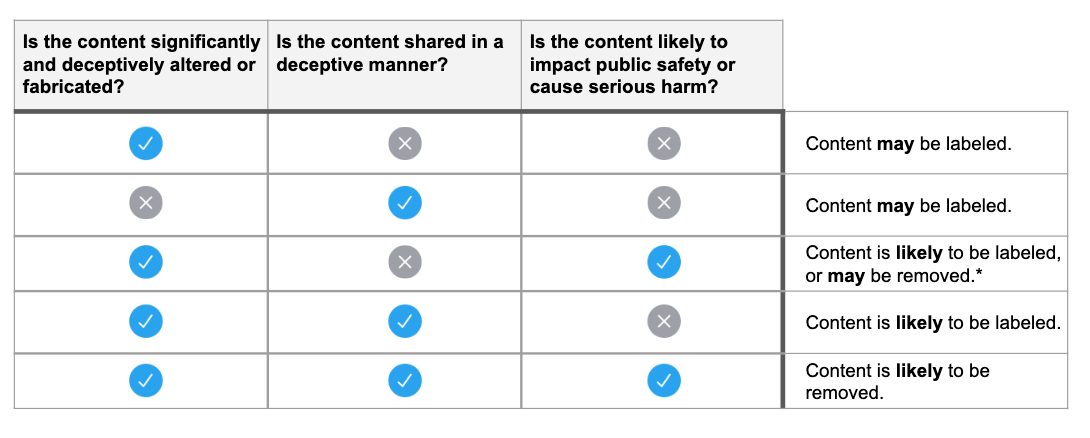
To most people on the web, deepfakes can be entertaining. But for the rest, manipulated media causes fear and can certainly ruin someone's life.
When the deepfake was first introduced, people saw the technology with awe. With it, video manipulation is made a lot easier, thanks to AI. But the consequences is that, anyone with even low-powered devices can create manipulated media, meaning that disinformation can be made just as easy.
In the world where people rely on the internet for information, any form of misinformation, disinformation an malinformation can be dangerous and misleading.
Social media networks are scrambling for a solution.
Facebook has introduced its methods to help curb deepfakes and manipulated media from its platforms. And here, Twitter follows its steps by introducing its own guidelines and course of action for manipulated content.
Our new rule: You may not deceptively share synthetic or manipulated media that are likely to cause harm. In addition, we may label Tweets containing synthetic and manipulated media to help people understand their authenticity and to provide context. https://t.co/VN8uGyVJgq
— Twitter Safety (@TwitterSafety) February 4, 2020
According to Twitter on its blog post announcement:
Based on an open survey and feedback from users, Twitter creates its own policy regarding synthetic and manipulated media:
- Are the media synthetic or manipulated? Twitter bans media that has been significantly and deceptively altered or fabricated.
- Are the media shared in a deceptive manner? Twitter isn't allowing media if its context could result in confusion, misunderstanding, or deception.
- Is the content likely to impact public safety or cause serious harm? Media that threats to physical safety or wellbeing, spreads violence and intimidating isn't allowed on Twitter.

Besides that, Twitter also said that is accessing the context of the tweet to determine the course of action. Here, the company is looks into:
- The text of the tweet accompanying or within the media.
- The metadata associated with the media.
- The Information on the profile of the person sharing the media.
- The websites linked in the profile of the person sharing the media, or in the tweet sharing the media.
To enforce the policy, Twitter said that it is displaying labels, and reduce the visibility of those tweets that are violating its synthetic and manipulated media policy. The social media is also putting a warning to notify other users who are about to retweet the tweet with the manipulated media.
Twitter may use a combined power of AI and human moderators. But considering the massive amount of tweets the social media is having at each given moment, traditionally, Twitter has been horrible at understanding context.
Twitter has been considered "toxic" that even its founder and CEO Jack Dorsey was asking for help.
But still, this is a work in progress to the right direction.
Twitter admits this is a challenge and it will make some errors along the way.
